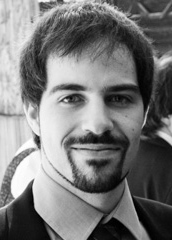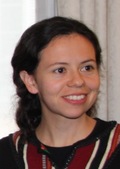ProjectComputationalSonography
Computational SonographyScientific Director: Prof. Dr. Nassir NavabContact Person(s): Dr. Christoph Hennersperger |
Abstract
3D ultrasound imaging has high potential for various clinical applications, but often suffers from high operator-dependency and the directionality of the acquired data. State-of-the-art systems mostly perform compounding of the image data prior to further processing and visualization, resulting in 3D volumes of scalar intensities. This work presents computational sonography as a novel concept to represent 3D ultrasound as tensor instead of scalar fields, mapping a full and arbitrary 3D acquisition to the reconstructed data. The proposed representation compactly preserves significantly more information about the anatomy-specific and direction-depend acquisition, facilitating both targeted data processing and improved visualization. We show the potential of this paradigm on ultrasound phantom data as well as on clinically acquired data for acquisitions of the femoral, brachial and antebrachial bone. Further investigation will consider additional compact directional-dependent representations on the one hand and on the other hand modify Computational Sonography from working on B-Mode images to RF-envelope statistics, motivated by the statistical process of image formation. We will show the advantages of the proposed improvements on simulated ultrasound data, phantom and clinically acquired ultrasound data.Detailed Project Description
C. Hennersperger, M. Baust, D. Mateus, N. Navab Computational Sonography MICCAI 2015, the 18th International Conference on Medical Image Computing and Computer Assisted Intervention C. Hennersperger, D. Mateus, M. Baust, N. NavabA Quadratic Energy Minimization Framework for Signal Loss Estimation from Arbitrarily Sampled Ultrasound Data Medical Image Computing and Computer-Assisted Intervention, MICCAI 2014, Lecture Notes in Computer Science Volume 8674, 2014, pp 373-380 N. Rieke, C. Hennersperger, D. Mateus, N. Navab
Ultrasound Interactive Segmentation with Tensor-Graph Methods IEEE International Symposium on Biomedical Imaging (ISBI), Beijing, China, April 2014
Pictures
Team
Contact Person(s)
|
Working Group
|
|
|
Alumni
|
Location
| Technische Universität München Institut für Informatik / I16 Boltzmannstr. 3 85748 Garching bei München Tel.: +49 89 289-17058 Fax: +49 89 289-17059 |
| Klinikum rechts der Isar der Technischen Universitüt München Ismaninger Str. 22 81675 München IFL Lab - Room: 01.3a-c Tel.: +49 89 4140-6457 Fax: +49 89 4140-6458 |
internal project page
Please contact Dr. Christoph Hennersperger for available student projects within this research project.




